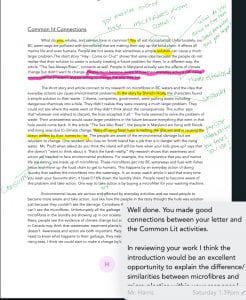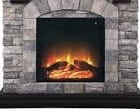How did the development of the atomic bomb change the world?
All of my information regarding the Manhattan Project before this unit came from the TRAILER of the Oppenheimer movie. I knew the US built a different type of bomb and that it had devastating effects that ended WWII. I didn’t even know enough to have an opinion on the driving question.
We started the project with lectures about the people, science, and effect of the atomic bomb. We then wrote a piece on any event or person that we wanted talk about and argue why it was historically significant. My choice was to write about Pearl Harbour which led me to research and gave me a chance to revisit the idea of historical significance which we would be using throughout this project. You can see my argument for why Pearl Harbour is historically significant here.

Next, instead of keystones or milestones like most humanities projects, we dived into the creation of the final product by being put into groups of 6. Our goal over the next few weeks was to research, write, design, and publish an interactive book on the historical significance of the Manhattan Project. Our group took a loooong time to brainstorm ideas for our book but in the end we came up with an original and creative idea for our book that no other group did. Instead of writing the book from an outside point of view, we wrote the book from Oppenheimer’s perspective, and turned it into his journal.
 For part of this project, two group members went on a field school to New Mexico, and visited the Trinity site and a museum which is where they interviewed people and took photos for our book. Back at Seycove, the rest of us split up the book into sections. As the project manager, I helped split up the tasks and research topics to start the process of creating out book. I personally set goals for each class and made sure everyone knew what their job was when they left class each day. I was in charge of finding and writing the information for the “classified file” and the opening writing about Oppenheimer becoming director of Los Alamos.
For part of this project, two group members went on a field school to New Mexico, and visited the Trinity site and a museum which is where they interviewed people and took photos for our book. Back at Seycove, the rest of us split up the book into sections. As the project manager, I helped split up the tasks and research topics to start the process of creating out book. I personally set goals for each class and made sure everyone knew what their job was when they left class each day. I was in charge of finding and writing the information for the “classified file” and the opening writing about Oppenheimer becoming director of Los Alamos.
One of the requirements of our book was making sure each team member was in a video so my group came up with the idea to do a reenactment of Vice President Truman becoming President and then finding out about the Manhattan Project. This emphasized how much of a secret the building of the atomic bomb was even at high levels of government.

Overall my group worked really well together. Everybody did their part and helped to come up with ideas when our book got off track or when our thesis needed to be revised. I really liked collaborating in this project and I think it would have been difficult to do on my own. We could build our ideas off of each other and research and develop the part of the book we were interested in doing. I also liked how we each had roles as it made things go smoother. We knew who would edit the videos, for example, and who to ask for help when designing the layout of our pages. We could rely on each other to do our part while still being able to ask for help and get a response when we needed one.

 Much of this project was about communication and research skills. As a group we found it really challenging to find sources that talked about Oppenheimer’s thoughts, which caused difficulty considering it was supposed to be from his perspective. This led to deeper research and creativity. I really love how we had different ways to show our information. We had the classified file at the beginning, newspaper to show the historical significance the end, as well as interviews, a video, and photos. To make our book to feel more like a journal we called the chapters “entries,” crossed out words, and coffee stains on the pages.
Much of this project was about communication and research skills. As a group we found it really challenging to find sources that talked about Oppenheimer’s thoughts, which caused difficulty considering it was supposed to be from his perspective. This led to deeper research and creativity. I really love how we had different ways to show our information. We had the classified file at the beginning, newspaper to show the historical significance the end, as well as interviews, a video, and photos. To make our book to feel more like a journal we called the chapters “entries,” crossed out words, and coffee stains on the pages.
Now at the end of the project, I realize how much more to the Manhattan project there is than I thought. It was interesting to learn “little’ details like the government actually built a full town so the scientists could bring their families. It was also interesting to learn more about why the decision to build, and drop the bomb is controversial. Below you can see my group’s final product. Make sure you check out the top-notch reenactment video as well as read why this event is so historically significant.
 In my writing journal you will also find my
In my writing journal you will also find my 

 The main challenge in making our visual was finding the best light source for inside our lantern. This was the part that I thought would be easy but the type of light mattered. Some were not strong enough which meant that the shapes were not projected clearly, and some duplicated the shapes so that they overlapped. In the end, we used the light on an iPhone to cast the perfect light.
The main challenge in making our visual was finding the best light source for inside our lantern. This was the part that I thought would be easy but the type of light mattered. Some were not strong enough which meant that the shapes were not projected clearly, and some duplicated the shapes so that they overlapped. In the end, we used the light on an iPhone to cast the perfect light. There were about eight rooms and each room connected to a theme shown in Avatar that we also see in world history and even in our present. For example, my room theme was militarism and my group and I had to connect the idea of militarism to the Komagata Maru incident. How the Canadian government responded with militarism to the arrival of the Komagata Maru was represented visually in our exhibition room, the Combat Zone. On the night of the exhibition, all of the grades in my room were told to start setting up, as the Grade 9 had a layout and plan in mind. Unfortunately, the student who had created and posted the layout was sick and no one understood what he had drawn. We came up with several ideas and moved props around when we were told that we were in the wrong place. After relocating, we found we were missing two of the tarps needed for the plan. Another challenge was finding the right spot for our specific monument. We needed less light
There were about eight rooms and each room connected to a theme shown in Avatar that we also see in world history and even in our present. For example, my room theme was militarism and my group and I had to connect the idea of militarism to the Komagata Maru incident. How the Canadian government responded with militarism to the arrival of the Komagata Maru was represented visually in our exhibition room, the Combat Zone. On the night of the exhibition, all of the grades in my room were told to start setting up, as the Grade 9 had a layout and plan in mind. Unfortunately, the student who had created and posted the layout was sick and no one understood what he had drawn. We came up with several ideas and moved props around when we were told that we were in the wrong place. After relocating, we found we were missing two of the tarps needed for the plan. Another challenge was finding the right spot for our specific monument. We needed less light
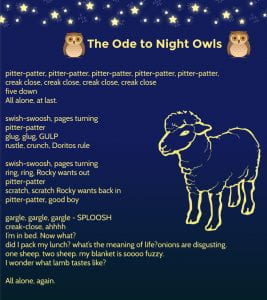

 can recognize my strengths and take responsibility for using strategies to focus, manage stress, and accomplish my goals. I use the THINGS app and my timer and go to LAC in order to focus and manage my time and goals. To manage my stress I exercise, and go to bed on time as much as a night owl can. If school was later in the day like 8 pm my stress level would go down. That is just a suggestion. The main challenge to this area is my anxiety which completely blocks my thinking and strategizing.
can recognize my strengths and take responsibility for using strategies to focus, manage stress, and accomplish my goals. I use the THINGS app and my timer and go to LAC in order to focus and manage my time and goals. To manage my stress I exercise, and go to bed on time as much as a night owl can. If school was later in the day like 8 pm my stress level would go down. That is just a suggestion. The main challenge to this area is my anxiety which completely blocks my thinking and strategizing. 

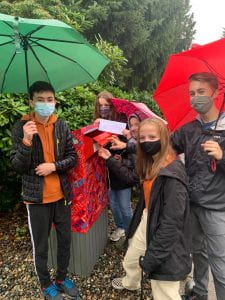
 called “Turtle’s Song”.
called “Turtle’s Song”.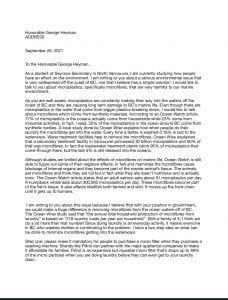


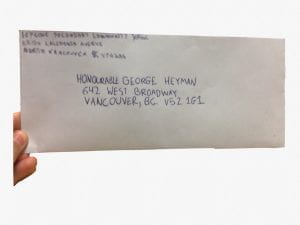
 Something I found very amusing was the fact that almost NOBODY in our
Something I found very amusing was the fact that almost NOBODY in our